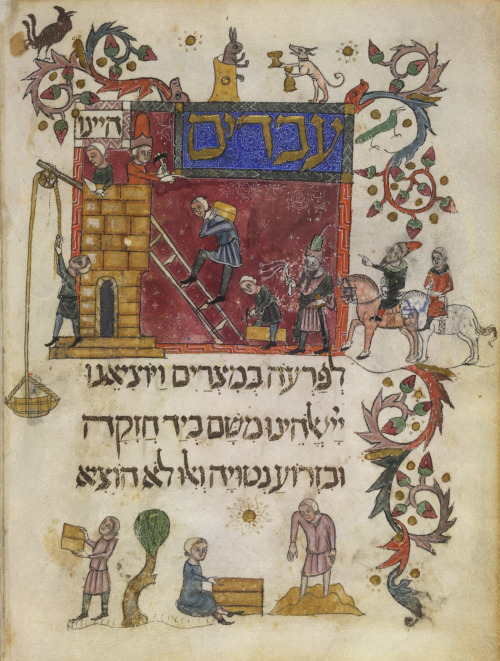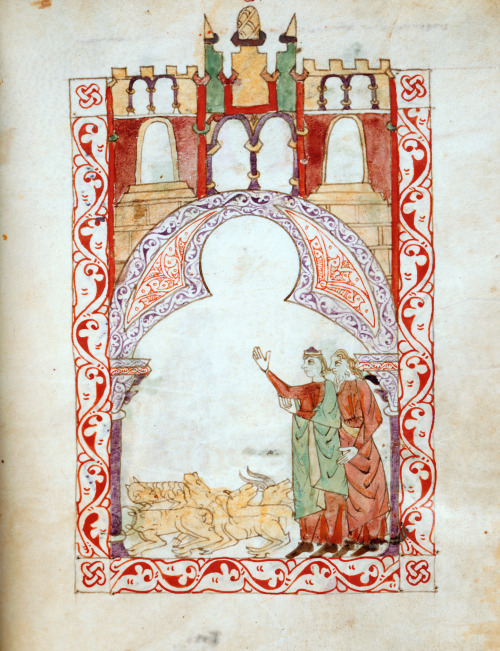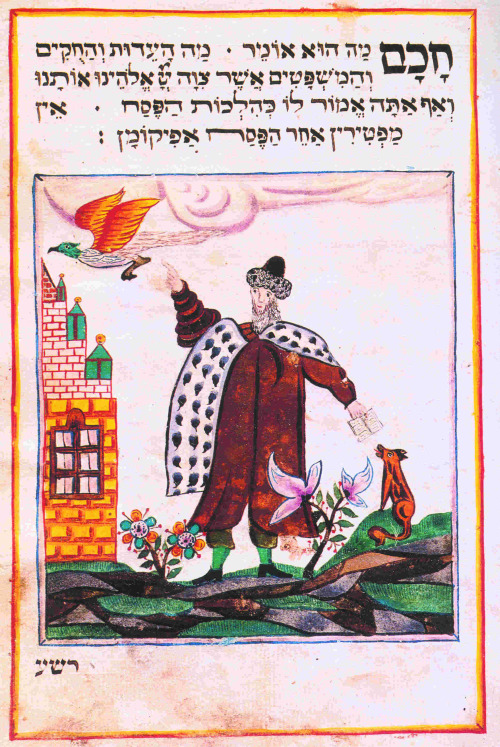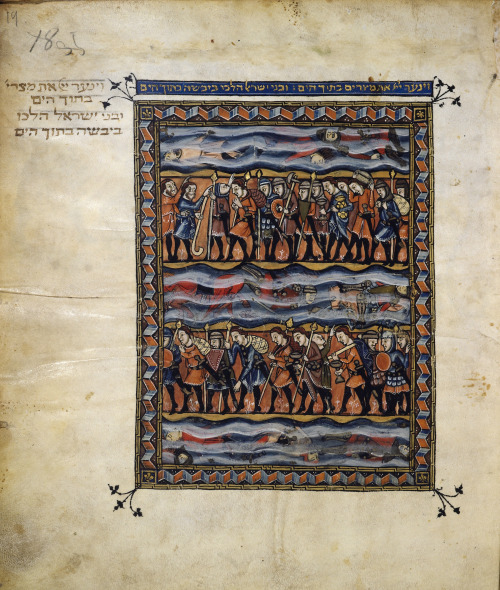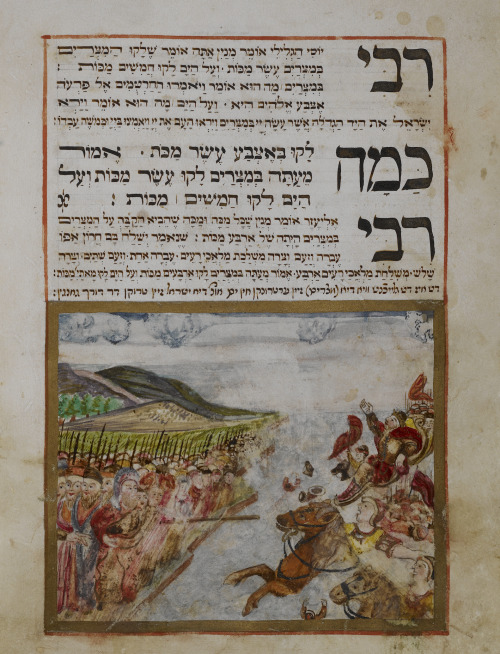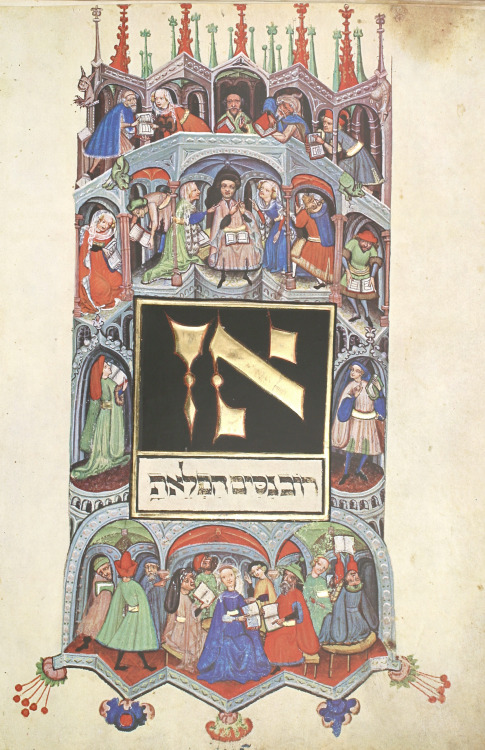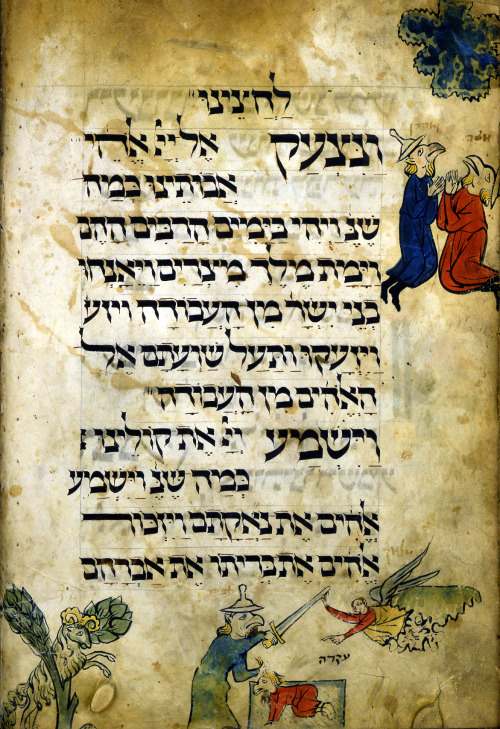jewishhenna:letmypeopleshow:10 Lavishly Illustrated Medieval Haggadah Pages That Continue to Reveal
jewishhenna:letmypeopleshow:10 Lavishly Illustrated Medieval Haggadah Pages That Continue to Reveal Their Secrets “How does this book on Jewish manuscript illumination differ from all other such books?” Marc Michael Epstein could not resist posing the question in “Skies of Parchment, Seas of Ink: Jewish Illuminated Manuscripts,”a sweeping, lavishly illustrated—and yes, illuminating—survey out this week from Princeton University Press. Nine scholars join Epstein in this innovative anthology of essays chronicling the history of these manuscripts—the Bible, the Haggadah, the prayer book, marriage documents, and other Jewish texts—from the middle ages to the present. The goal was to push beyond tradition and examine themanuscripts from a broader perspective, considering artistic style, iconography, narrative, cross-cultural borrowings and references.One example is the enigmatic (so-called) Birds’ Head Haggadah,probably illuminated in Mainz around 1300—the earliest surviving example ofthe phenomenon of the obfuscation of the human face in such a manuscript. What are these strange beaked creatures? Tracing the imagery back to the cherubs on the Ark and the curtain of the Holy of Holies, Epstein explains why volume would be more accurately known as the Griffins’ Head Haggadah.In the spirit of the season, here are 10 Haggadah pagesdiscussed in this fascinating new book. 1. “We were slaves to Pharaoh in Egypt.” The lower margin and central illustration depicts the slaving Israelites, while at top, a hare is served a drink by a dog, perhaps articulating the wish that “one day the Egyptian dogs will serve us.” The Barcelona Haggadah, Spain, ca. 1340. British Library, London.2. Moses and Aaron before Pharaoh, rendered in a“primitive” style in the Hispano-Moresque Haggadah from Castile, Spain, ca.1300. British Library, London. 3. The Wise Child in a Haggadah illuminated by Nathan ben Abraham Speyer of Breslau. Silesia, Germany (now Wrocław,Poland), 1768. National Library of Israel, Jerusalem. 4. Armed Israelites crossing the Red Sea in the RylandsHaggadah, Catalonia, Spain, mid and late14th century. John Rylands University Library, Manchester. 5. Israelites crossing the Red Sea in a Haggadahwritten and illustrated by Joseph Bar David of Leipnick, Moravia. Darmstadt, Germany,1733. Library of the Jewish Theological Seminary, New York. 6. The Ten Plagues in a Haggadah with thecommentary of Abravanel, written and illustrated by Judah Pinḥas, Germany,1747. Friedrich-Alexander Universistätsbibliothek, Erlangen-Nuremberg. 7. Maror, the bitter herbs (in the BrotherHaggadah), Catalonia, Spain, third quarter of 14th century. British Library,London.8. Disputing and frustrated figures populate ascene where women learn together and with men. First Darmstadt Haggadah. MiddleRhine, second quarter of the 15th century. Hessische Landes undHochschulbibliothek, Darmstadt.9. Israelites building store-cities for Pharaoh.Haggadah illustrated by Joseph Bar David of Leipnick, Moravia. Altona, Germany,1740. British Library, London.10. The Binding of Isaac in the manuscript traditionally known as the Birds’ Head Haggadah, Upper Rhine, Germany, ca. 1310. TheIsrael Museum, Jerusalem. Epstein argues that the volume should be called the Griffins’ Head Haggadah. YES yes yes yes. I was so thrilled to see a copy of this book visiting MME last month and I can confirm that it is a MUST-HAVE for anyone interested in Jewish history, illuminated manuscripts, the history of the book, or pretty shiny things. -- source link
#haggadah#art history#jewish stuff#pesach#long post
